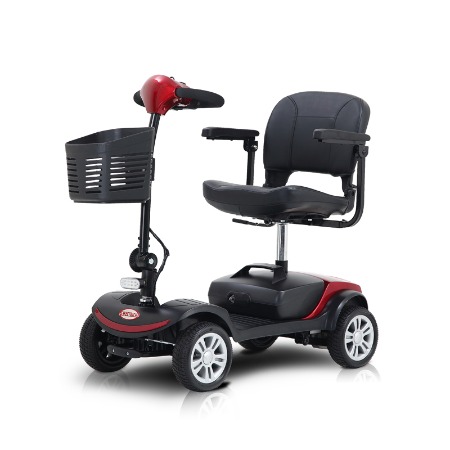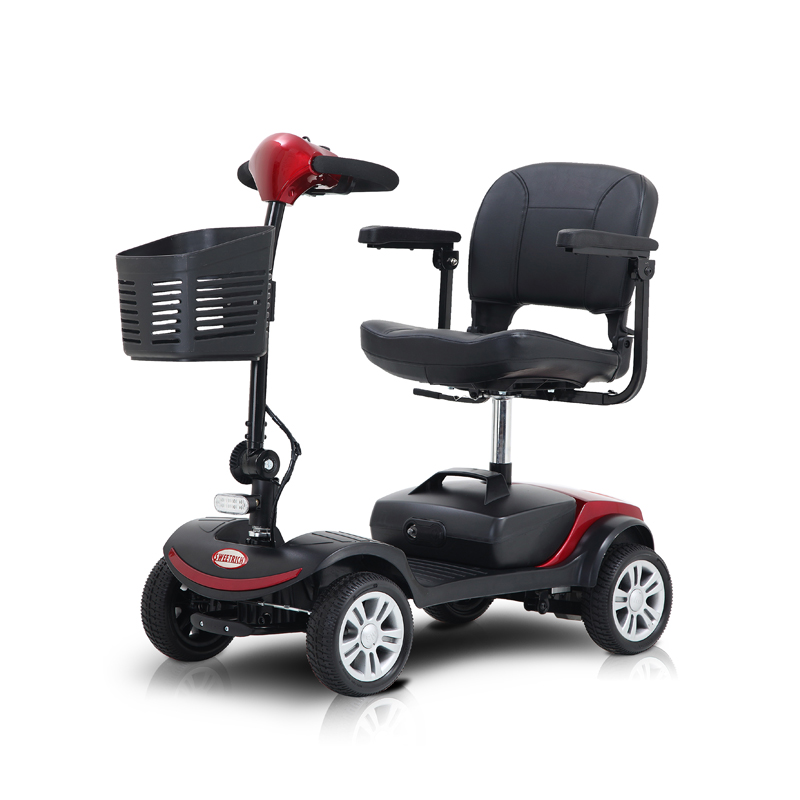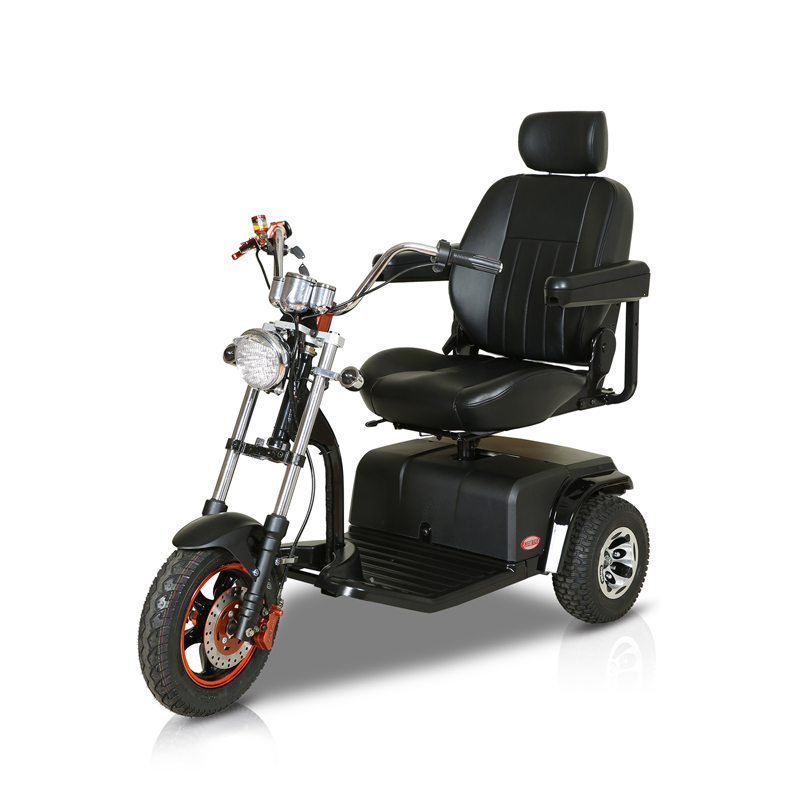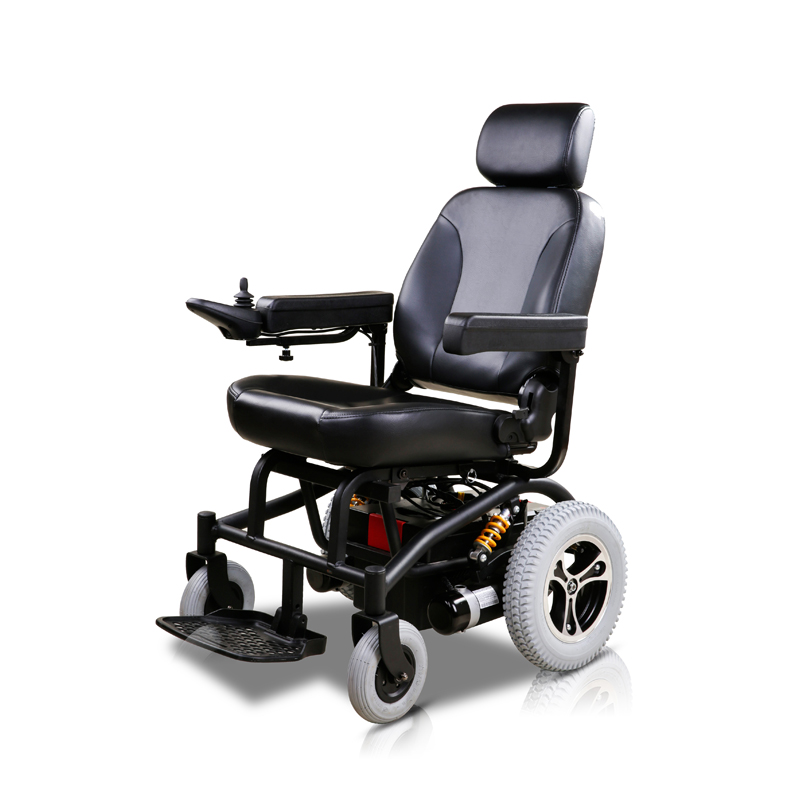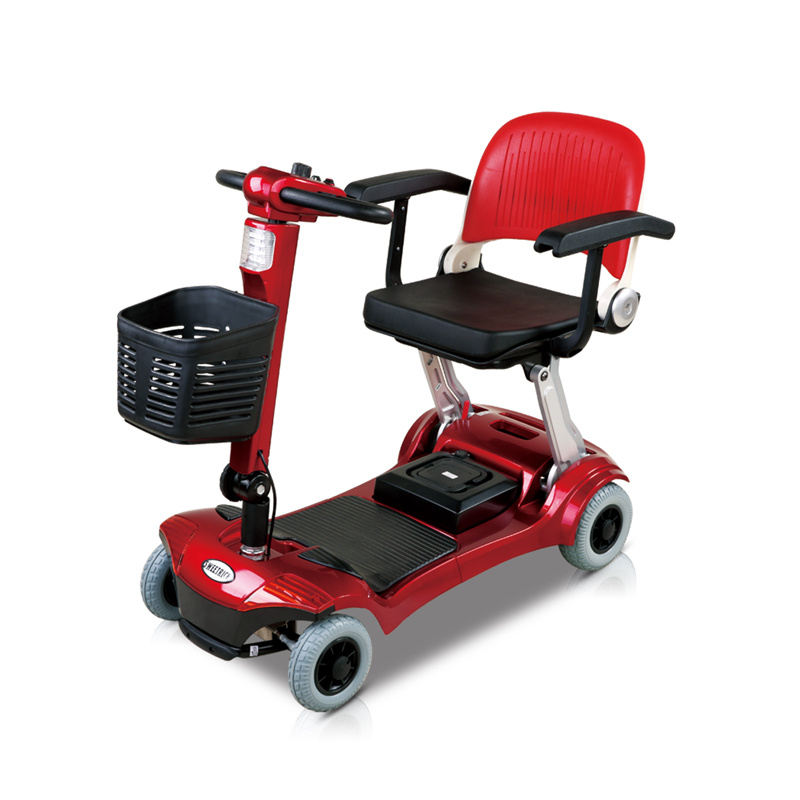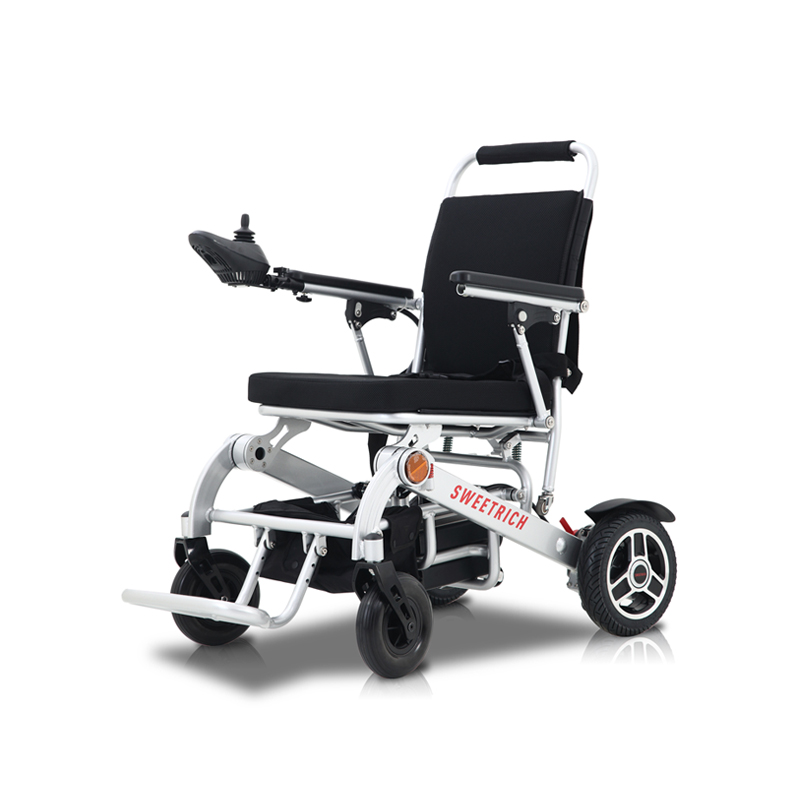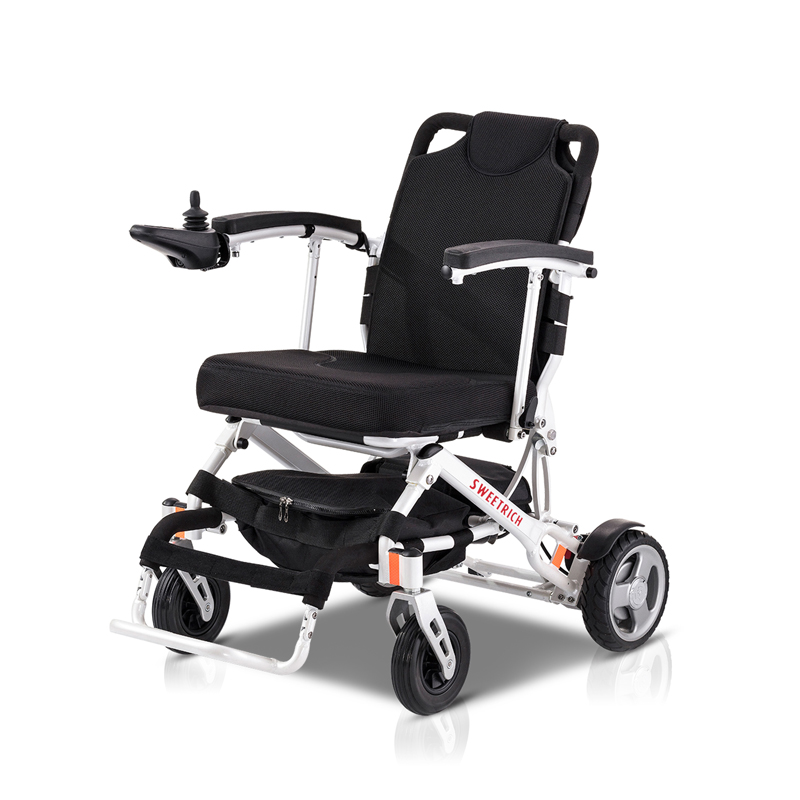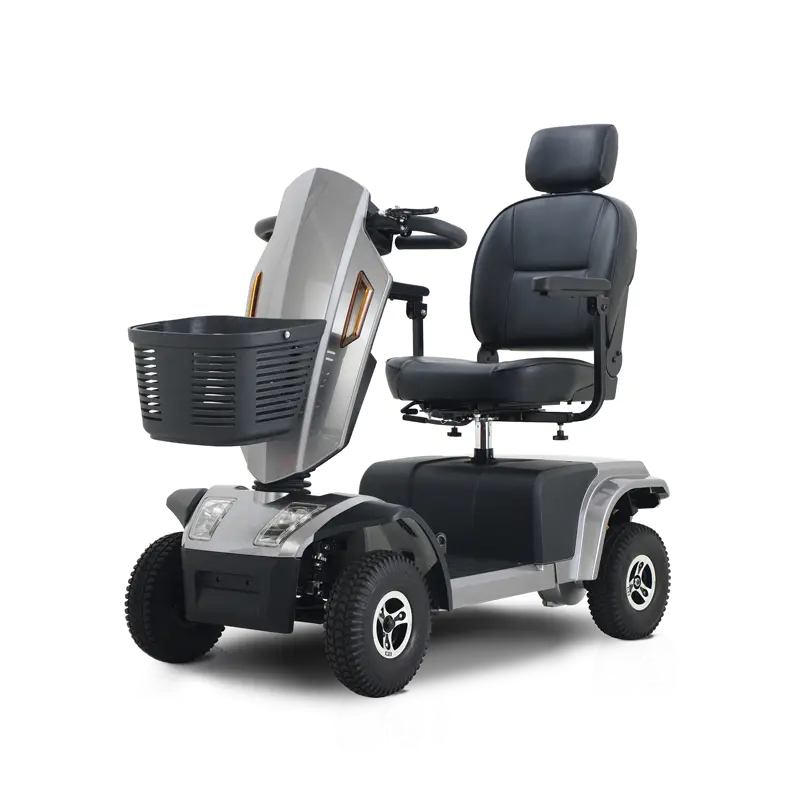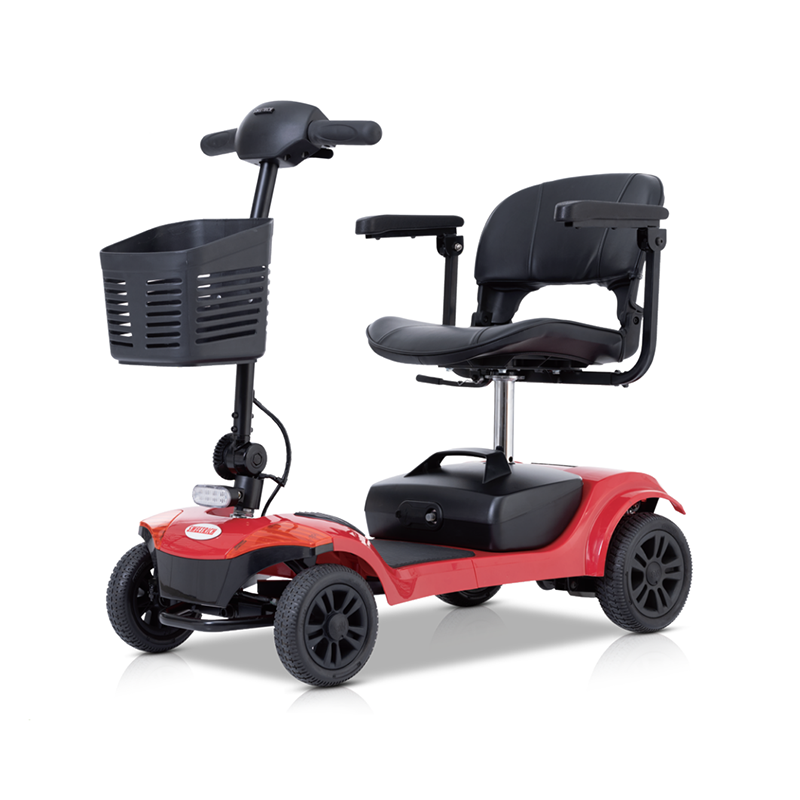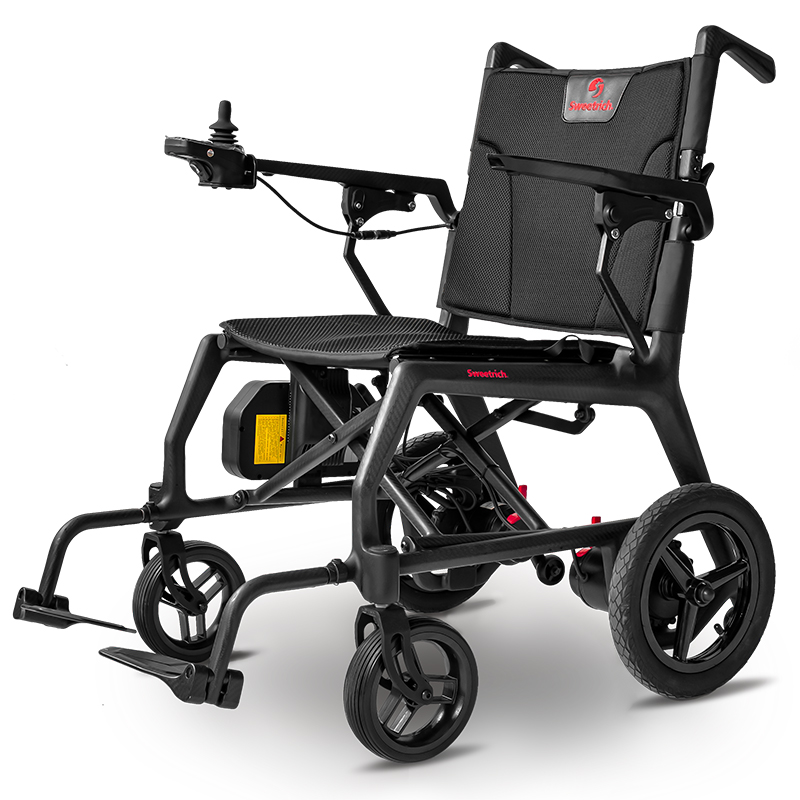Choosing a motorized wheelchair is a significant decision that impacts independence, mobility, and quality of life. With numerous models and features available, the process can feel overwhelming. This comprehensive guide is designed to simplify your journey. We'll walk you through every critical consideration—from assessing your personal needs and navigating key specifications to understanding the different types of chairs and their ideal environments. Our goal is to empower you with the knowledge and confidence needed to select a power wheelchair that seamlessly integrates into your lifestyle, enhancing your freedom and daily comfort. Let's dive into the essential factors that will lead you to your perfect mobility solution.
Understanding Your Personal Needs and Lifestyle
Before examining specific models or features, the most crucial step is conducting an honest assessment of your individual requirements and how the chair will be used. A wheelchair that is perfect for one person might be entirely unsuitable for another. This initial self-evaluation will serve as the foundation for every other decision you make. Consider your daily routines, the spaces you navigate most frequently, and any physical considerations that might affect how you use the chair. Do you live in a compact urban apartment, or a spacious rural home? Do you need to transport the chair frequently in a vehicle? Answering these questions will immediately narrow down your options and guide you toward a chair that supports your life, rather than complicating it. The right motorized wheelchair should feel like an extension of yourself, providing the support and freedom you need to engage fully in your day-to-day activities.
- Primary Environment: Will you use it predominantly indoors, outdoors, or a mix of both? Indoor use prioritizes maneuverability and a small turning radius, while outdoor use requires power, stability, and all-terrain capabilities.
- Transportation: How will you transport the wheelchair? If you plan to use a car, the weight, disassembly process, and availability of a lightweight or portable power chair are paramount.
- Seating and Posture: Assess your need for specialized seating. Do you require custom contours, pressure relief cushions, specialized back supports, or tilt-in-space functions to maintain posture and prevent skin breakdown?
- Daily Activities: Consider your hobbies and daily tasks. Do you need to reach high shelves, use a desk, or navigate active community spaces? Your activities will influence the required seat height and overall chair design.
- Physical Strength and Dexterity: Evaluate your ability to operate a joystick or other controls. This will determine the type of drive control system you need.
Key Questions for Self-Assessment
To structure your self-assessment, here are some pivotal questions to ask yourself or discuss with your healthcare provider. These questions are designed to uncover the nuanced needs that will directly correlate to the specifications of your ideal chair. Taking the time to thoughtfully answer each one can prevent the costly mistake of purchasing a chair that is inadequate or excessive for your situation. This process is not just about the chair's capabilities, but about ensuring those capabilities align perfectly with your personal ecosystem—your home, your vehicle, your body, and your spirit of independence.
- What are the width of the doorways and hallways in my home?
- What types of surfaces do I encounter daily (e.g., carpet, tile, pavement, gravel, grass)?
- How many hours a day do I anticipate spending in the wheelchair?
- Do I have any specific medical conditions that affect my seating posture or pressure points?
- What is my budget, and does my insurance offer any coverage for a power wheelchair?
Decoding Key Specifications: What Really Matters
Technical specifications can seem like a confusing jumble of numbers, but each one tells you something vital about the chair's performance and suitability. Understanding these metrics is key to making an informed comparison between different models. The most critical specs to focus on are weight capacity, range, and turning radius. The weight capacity must comfortably support your weight plus any items you routinely carry. The range, measured in miles or kilometers, indicates how far the chair can travel on a single charge; underestimating this can severely limit your freedom. The turning radius determines the chair's agility in tight spaces like bathrooms and kitchens. Beyond these, the seat dimensions, overall chair weight, and type of batteries are also fundamental factors that will impact your daily experience.
- Weight Capacity: Choose a chair with a capacity that exceeds your body weight to ensure safety, longevity, and optimal performance.
- Range: This indicates the distance the chair can travel on a full battery charge. Consider your typical daily travel distance and double it for a safe buffer.
- Turning Radius: Crucial for indoor maneuverability. A smaller turning radius allows for easier navigation in confined spaces.
- Seat Width and Depth: Proper fit is essential for comfort and posture. You should have about an inch of space on either side of your hips.
- Overall Weight: Impacts portability. Lighter chairs are easier to disassemble and transport but may sacrifice some durability.
- Battery Type: Gel-cell batteries are common and require maintenance, while lithium-ion batteries are lighter, longer-lasting, but more expensive.
Comparison of Common Power Wheelchair Specifications
The following table provides a general overview of how specifications typically align with different categories of power wheelchairs. This comparison is a useful starting point for understanding the market segments. It's important to remember that these are general ranges, and specific models may vary. A compact portable chair will naturally sacrifice range and power for the benefit of light weight and easy transport, while a heavy-duty all-terrain chair will be less concerned with a small turning radius and more focused on torque and stability. Use this table to identify which category best fits the needs you identified in the previous section.
| Chair Type | Avg. Weight Capacity | Avg. Range (miles) | Avg. Turning Radius | Ideal For |
| Portable/Folding | 250 - 300 lbs | 10 - 15 miles | 30 - 35 inches | Frequent travel, compact cars, occasional use |
| Standard Indoor | 300 - 350 lbs | 10 - 18 miles | 24 - 28 inches | Tight spaces, apartment living, smooth surfaces |
| Heavy-Duty/All-Terrain | 400 - 500+ lbs | 15 - 20+ miles | 30 - 40+ inches | Outdoors, uneven terrain, higher weights |
Exploring Different Types of Power Wheelchairs
The world of motorized wheelchairs is not one-size-fits-all. Manufacturers have developed distinct categories to meet diverse needs, and understanding these categories is essential. The three primary types are rear-wheel drive (RWD), mid-wheel drive (MWD), and front-wheel drive (FWD). Rear-wheel drive chairs offer stability at higher speeds and are excellent for outdoor use. Mid-wheel drive chairs, with their center-set drive wheels, provide the smallest turning radius, making them the champions of indoor maneuverability. Front-wheel drive chairs excel at climbing obstacles and navigating curbs due to their pulling motion. Your choice among these will be heavily influenced by your primary environment, as identified in your personal needs assessment.
- Rear-Wheel Drive (RWD): Best for outdoor performance and higher speeds. Offers a smooth ride but has a larger turning radius than MWD.
- Mid-Wheel Drive (MWD): The most common type for indoor/outdoor use. Features a tight turning radius for excellent maneuverability but can be prone to "wheelies" on obstacles.
- Front-Wheel Drive (FWD): Excellent for tackling obstacles and curbs. Provides good traction but can be less intuitive to steer for some users.
- Portable Power Chairs: Lightweight, often foldable or easily disassembled for transport in a car. Ideal for those who are active and on the go.
- All-Terrain Power Chairs: Built with robust frames, powerful motors, and often specialized tires (e.g., knobby or pneumatic) for navigating grass, gravel, sand, and slopes.
Choosing the Right Drive Type for Your Environment
Selecting the correct drive type is perhaps the most technical decision you will make, as it fundamentally dictates how the chair interacts with the world. This decision should be made in direct response to the list of environments and surfaces you created during your self-assessment. For instance, if your life involves constantly navigating tight corners between your living room, kitchen, and bathroom, a Mid-Wheel Drive chair is almost certainly your best bet. Conversely, if your priority is a stable, confident ride on sidewalks and park paths, a Rear-Wheel Drive model would be more suitable. Test driving different drive types, if possible, is highly recommended to get a feel for their handling characteristics.
- For primarily indoor use with tight spaces: Prioritize a Mid-Wheel Drive (MWD) chair.
- For a mix of indoor and outdoor use on paved surfaces: A Mid-Wheel Drive (MWD) or Rear-Wheel Drive (RWD) are both strong contenders.
- For outdoor use and higher speeds: A Rear-Wheel Drive (RWD) chair is typically the best choice.
- For navigating rough terrain and obstacles: Consider a Front-Wheel Drive (FWD) or a specialized All-Terrain chair.
Essential Features and Comfort Considerations
Beyond the core mechanics, the features and comfort options available on a motorized wheelchair can dramatically affect your satisfaction and well-being. These elements transform the chair from a simple mobility device into a personalized throne. Comfort starts with the seat itself—consider cushioning material (foam, gel, air) for pressure relief, especially if you will be seated for long periods. Adjustable armrests and leg rests allow for a custom fit that promotes proper circulation and reduces fatigue. From a features standpoint, consider the ease of use of the controls, the positioning of the batteries for balance, and the availability of accessories like trays, bags, or oxygen tank holders. These details, though sometimes called "extras," are often what make the chair truly usable for your specific life.
- Seat Cushion: Invest in a high-quality pressure-relief cushion to prevent pressure sores. Options include gel, air, and memory foam.
- Adjustable Components: Look for chairs with height-adjustable armrests and angle-adjustable leg rests to enhance comfort and positioning.
- Drive Control: Ensure the joystick is easy to reach and operate. Some chairs offer alternative controls like sip-and-puff systems for users with limited hand dexterity.
- Suspension: A good suspension system absorbs shocks from uneven surfaces, providing a smoother and more comfortable ride.
- Accessories: Plan for your needs. Cup holders, storage bags, and mounting systems for medical devices can greatly increase convenience.
Navigating the Trial and Purchase Process
The final step in your journey is the hands-on evaluation and acquisition of your chosen power wheelchair. This phase is where theory meets reality. Whenever possible, insist on a test drive. A reputable dealer or medical equipment provider should allow you to operate the chair in a environment that simulates your daily challenges—try turning in a tight circle, going over a threshold, and driving on a slight incline. During this process, pay close attention to the comfort of the seat, the responsiveness of the controls, and the overall noise level. After selecting a model, thoroughly understand the warranty coverage, what it includes (frame, electronics, batteries), and the duration. Finally, inquire about the provider's service and repair policy; prompt and reliable service is invaluable.
- Always Test Drive: Never buy a power wheelchair without trying it first. Test it in conditions that mimic your daily life.
- Ask About Warranty: Understand the warranty terms for the frame, electronics, and batteries. These often have different coverage periods.
- Service and Support: Choose a provider known for reliable customer service and timely repairs. Ask about loaner chair policies.
- Insurance and Funding: If using insurance, ensure the provider handles paperwork and understands the requirements for medical necessity documentation.
- Final Fitting: Once delivered, ensure a technician adjusts the chair to your body—footplate height, armrest height, and controller position—for optimal safety and comfort.
FAQ
What is the average lifespan of a motorized wheelchair?
The average lifespan of a well-maintained motorized wheelchair is typically between 3 to 5 years, though many high-quality models can last significantly longer with proper care. The longevity depends heavily on several factors: the frequency of use, the environments it's used in (harsh outdoor conditions can cause more wear), the weight it regularly carries, and most importantly, the consistency of maintenance. Regularly charging the batteries, keeping the chair clean and dry, and having it serviced annually by a professional can greatly extend its operational life. The first components to usually require replacement are the batteries, which typically need to be changed every 12-18 months with regular use.
How do I maintain my power wheelchair's battery?
Proper battery maintenance is the single most important thing you can do to ensure the reliability and longevity of your power wheelchair. For standard lead-acid or gel-cell batteries, the golden rule is to avoid letting them fully discharge. You should recharge the batteries after every use, even if you've only used the chair for a short time, and aim to never let the charge level drop below 50% before recharging. Always use the manufacturer-provided charger and allow the batteries to charge fully before disconnecting. For lithium-ion batteries, which are becoming more common, the rules are less strict; they can be charged at any time without a "memory effect," but you should still avoid complete discharge. Regardless of type, keep battery terminals clean and free of corrosion.
Can a power wheelchair be used on public transportation?
Yes, in most regions, motorized wheelchairs are designed to be compatible with accessible public transportation systems like buses and trains. Public buses are equipped with ramps or lifts specifically for this purpose. The key factor is the size and weight of the chair. There are generally regulations concerning the maximum dimensions and weight for a wheelchair to safely use a bus ramp and fit within the designated securement area. It's crucial to check with your local transit authority for their specific requirements regarding size (typically length and width) and total weight (including the user). Most standard and portable power chairs will meet these requirements, but some larger, heavy-duty models might not.
What is the difference between a power wheelchair and a mobility scooter?
While both provide powered mobility, power wheelchairs and mobility scooters are designed for different users and needs. A power wheelchair is medically-oriented, offering comprehensive postural support with customizable seating (e.g., tilt, recline, elevating leg rests) and is controlled by a joystick mounted on the armrest. It is ideal for users who require full-time sitting support and may have limited upper body strength or dexterity. A mobility scooter, in contrast, is more like a vehicle; it has a handlebar or tiller for steering and a bicycle-like seat. It requires the user to have good upper body strength, balance, and trunk stability to operate. Scooters are often chosen for occasional outdoor use by individuals who can walk short distances but need help for longer trips.
Are there any specific options for plus-size individuals?
Absolutely. The market robustly caters to plus-size individuals with a category known as heavy-duty power wheelchairs or bariatric power chairs. These chairs are specifically engineered with reinforced frames, more powerful motors, and wider seats to accommodate higher weight capacities, which typically range from 400 to 700 pounds or more. They also feature extra-wide and reinforced seats, heavy-duty suspension systems, and larger wheels to ensure stability, safety, and comfort. When searching for a chair, filtering your options by weight capacity is the first step to finding models built to provide reliable and comfortable mobility for plus-size users.

